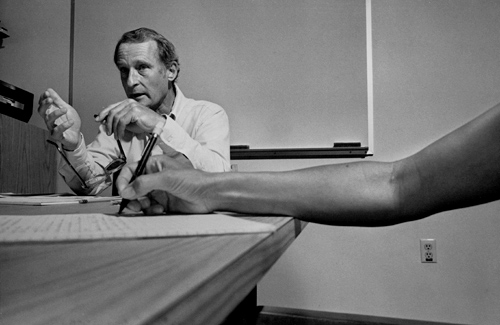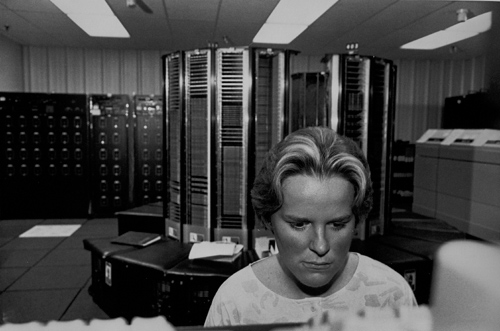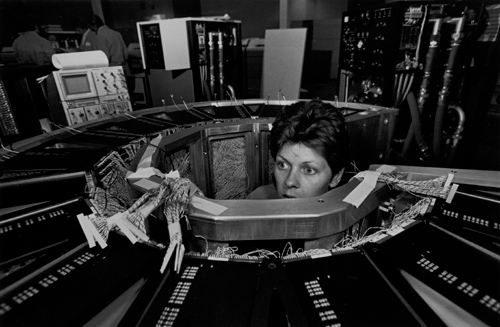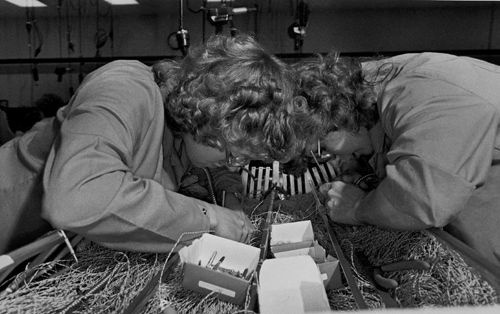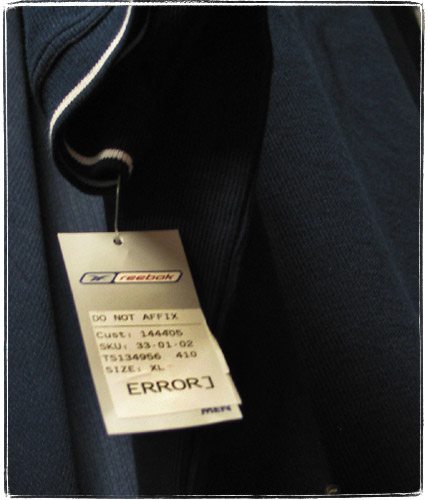
I found this some time ago in a sporting goods store. I wonder why the programmer made the tag printing machine print an error message on the tag itself. Probably to preserve the order of tags which are probably batched in relation to pallets of items.
A few days ago I was talking to a Radio Shack employee. It turns out they can print out a manual for most things they sell by just punching in it’s SKU number into a computer. I asked her if she knew what SKU (pronounced “skyoo”) stood for. She didn’t know. Can’t blame her -it took me a few months of writing an e-commerce application and hearing the word daily to inquire about it’s meaning. SKU is an abbreviation for Stock Keeping Unit.
By the way, in Radio Shack I was looking for a cheap lcd tv that I could use to hook up to the camera that is trained at entrance of my apartment building (it is hooked up to a coax cable that runs through the building). They had a tiny one for about $200, but I’d like a slightly bigger and cheaper one. B&W is ok. Any suggestions? I also need to find an affordable lcd tv for the bathroom. Come on, it’s the future now. We’ve been promised tv monitors and cameras everywhere. I am not asking for usable video phones, flying cars and robots bigger than a vacuum cleaner.
